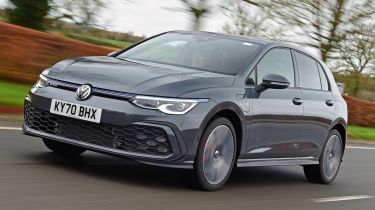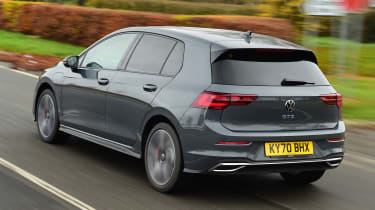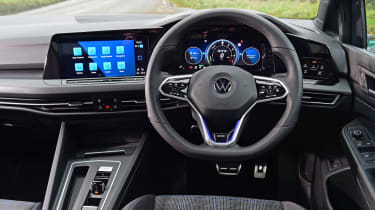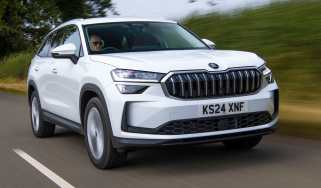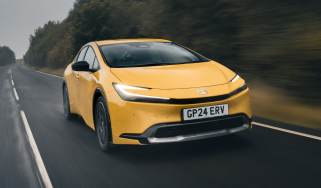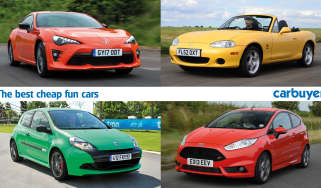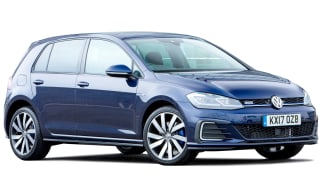Volkswagen Golf GTE hatchback review
"The Volkswagen Golf GTE is a sporty plug-in but there's better value to be had elsewhere"
Pros
- Low running costs
- Strong image
- Performance
Cons
- Expensive
- Frustrating infotainment
- Cheap interior trim
While not quite as cheap to run as a fully electric car, the flexibility of the Volkswagen Golf GTE plug-in hybrid could win over customers looking to dip their toe in the world of electrified motoring. It can cover most local trips with zero emissions but when a long journey crops up, you can rely on the petrol engine.
For many motorists the advantages of having 'two cars in one' will look rather appealing, at least while they wait for the charging network to improve and the cost of electric cars come down. The GTE doesn't have things all its own way because competition includes the talented Mercedes A 250 e, along with the SEAT Leon plug-in hybrid and Skoda Octavia iV.
Under the GTE's sporty bodywork, there's a 1.4-litre petrol turbo engine and an electric motor supplied by a 13kW battery. Officially this offers up to 40 miles of EV driving but we think around 30 miles is more realistic in normal conditions. Charging takes five hours or less, depending on the charger, and could cost less than a takeaway coffee. Official figures are boosted to 246mpg and CO2 emissions are cut to 26g/km, making the GTE very appealing for company-car drivers and anyone living in or near a low emissions zone.
More reviews
Car trim reviews
In-depth reviews
- Volkswagen Golf R review – the ultimate Golf
- Volkswagen Golf review - almost perfect family hatchback
- Volkswagen Golf R estate review
Used car reviews
Inside and out, the GTE shares many of its features with the GTI, including its tartan sports seats, body styling kit and sports steering wheel. With the combined efforts of its petrol engine and electric motor, it even has the same 242bhp, although its 6.7-second 0-62mph time is almost half-a-second slower. This is partly down to the GTE's extra weight, which also makes it feel slightly less agile than the GTI.
The VW Golf GTE's main drawback, however, is likely to be its price. Costing more than £35,000, the GTE is not only more expensive than its Leon and Octavia siblings, but also the Mercedes A 250 e in AMG Line trim. This makes it easy to argue the SEAT or Skoda are better value, and many may be tempted by the image of the A-Class and its desirable interior.
MPG, running costs & CO2
Along with its petrol engine, the Golf GTE features a powerful electric motor and a 13kWh battery, making it possible to drive for up to 39 miles without using any petrol. That's quite a large jump over the 8.7kWh battery and 30-mile range of the old Mk7 Golf GTE. However, the Mercedes A 250 e offers a slightly longer 45-mile range.
It will be hard to match the official pure-electric range figure in real world conditions but arguably the biggest merit of the electric running is the effect on the GTE's claimed CO2 figure, which is just 26g/km. This cuts Benefit-in-Kind (BiK) liability far below that of any regular petrol or diesel model, with only fully electric cars like the Volkswagen ID.3 costing company-car drivers less to run. For those who still drive long distances regularly (or can't install a home charger), the flexibility of the GTE could make more sense.
Turn on the car and it starts silently in electric mode, happily pulling away and remaining emissions-free in town and suburban driving - so long as there's enough charge in the battery. When depleted, the GTE instead acts like a Toyota Prius hybrid, juggling power between the petrol and electric motor, just as it does if you drive more quickly.
Charging the battery takes around five hours using a three-pin socket, falling to more like 3.5 hours using a 3.6kW home wallbox.
Engines, drive & performance
Thanks to the combined efforts of the 1.4-litre turbo petrol engine and 107bhp electric motor, the Golf GTE boasts a combined 242bhp - matching the Volkswagen Golf GTI while actually beating the hot hatch for pulling power. On the downside, the automatic-only GTE is also around 170kg thanks to its electric add-ons.
Acceleration from 0-62mph takes 6.7 seconds and the GTE can keep gathering speed until the needle reaches 140mph, where legally permitted. A drive mode button has a significant effect on the experience, because you can use it to keep some battery charge in reserve for later in a journey, or even tell the petrol engine to recharge the battery.
The car defaults to Comfort mode, and with optional adaptive dampers fitted (costing around £800) there's a good blend of ride comfort and the powertrain does a good job of switching between electric and petrol power. The GTE has sharp steering and reassuring handling, but it doesn't feel quite as agile as similar non-plug in Golfs owing to its extra weight.
Interior & comfort
Like the Golf GTD that came before it, the GTE is billed as an alternative to the GTI, and that's obvious inside. Although the colour palette favours hints of blue instead of red, there's the same tartan check fabric covering the seat inlays, jutting side bolsters to hold you firmly in place and a sports steering wheel.
It's also fitted with the same 10-inch touchscreen with Apple CarPlay and Android Auto, as well as a 10.3-inch digital instrument display. These have caused irritation for some users, with too many sub-menus making it tricky to perform some tasks that should be straightforward, so we hope the user experience can be fixed via software updates.
Overall quality is good but there are more cheap-looking plastics than we'd like. Some cutbacks like the absence of soft padding for the rear doors and a manual stick to prop open the bonnet are surprising when competition in the class is so unrelenting. One of the highlights of the Mercedes A 250 e is its desirable interior, with upmarket materials and a slick infotainment setup.
Practicality & boot space
One of the Golf's advantages is its long evolution because designers have had eight generations to tweak and improve its seating position and storage. There's lots of space for front passengers, and drivers of almost any height and shape should be able to find a comfortable seating position behind the wheel. There are generously sized cupholders, deep doorbins and a large glovebox.
There's just enough space in the rear seats for two adults but this doesn't leave much room in the middle, and there are roomier alternatives, including the Skoda Octavia. Unfortunately, the battery does mean the boot shrinks from the 380 litres of the standard Golf. It's still a practical shape, but there's no way of dropping the boot floor, so if you need to carry more stuff you'll need to fold the rear seats or pass items through the ski hatch. If you need a plug-in hybrid with a large boot, the Skoda Octavia iV is a better bet.
Reliability & safety
While it's been changed extensively, the Mk8 Golf is fundamentally an evolution of its predecessor, based on the same MQB underpinnings, so owners will be hoping reliability doesn't dip. The Mk7 Golf came 50th out of the top 75 models in our 2020 Driver Power owner satisfaction survey but a worrying 28.1% of owners reported a fault within the first year, most often with the car's electrics. That compares to just 7.7% of owners reporting an issue with the Toyota Corolla.
Concerns regarding safety are smaller, with the Volkswagen Golf scoring a solid five stars in Euro NCAP crash tests, thanks not only to its strong structure but also its active safety technology. This includes features like lane keeping assist for motorway driving, LED Matrix headlights that can adapt for traffic and the conditions, and Car2X communications that can share information about traffic and accidents between cars in real time.

